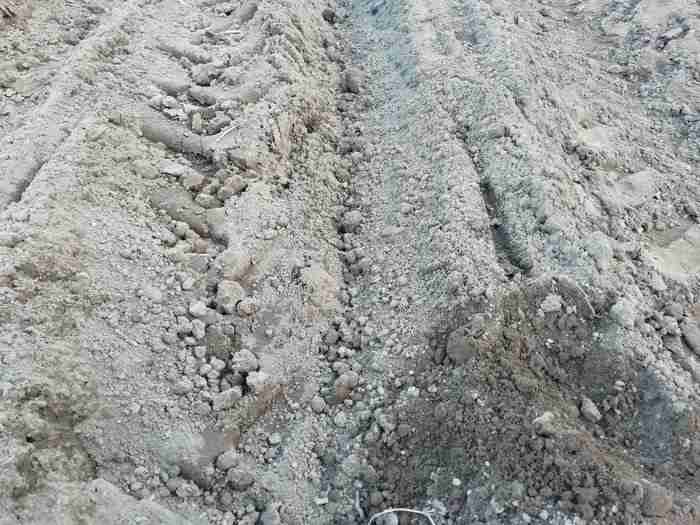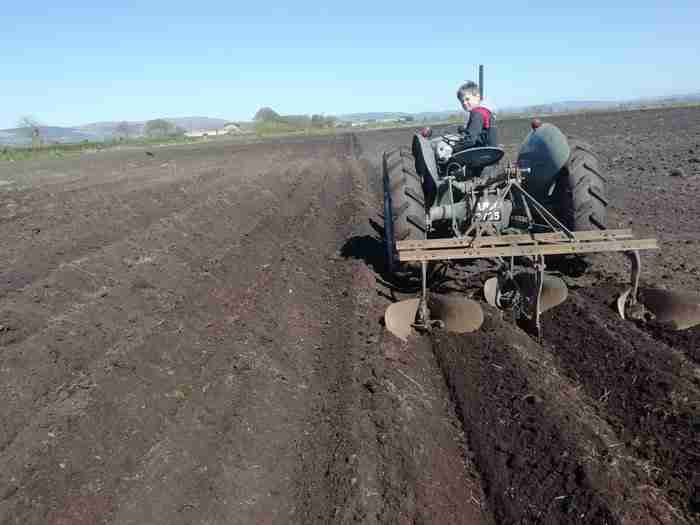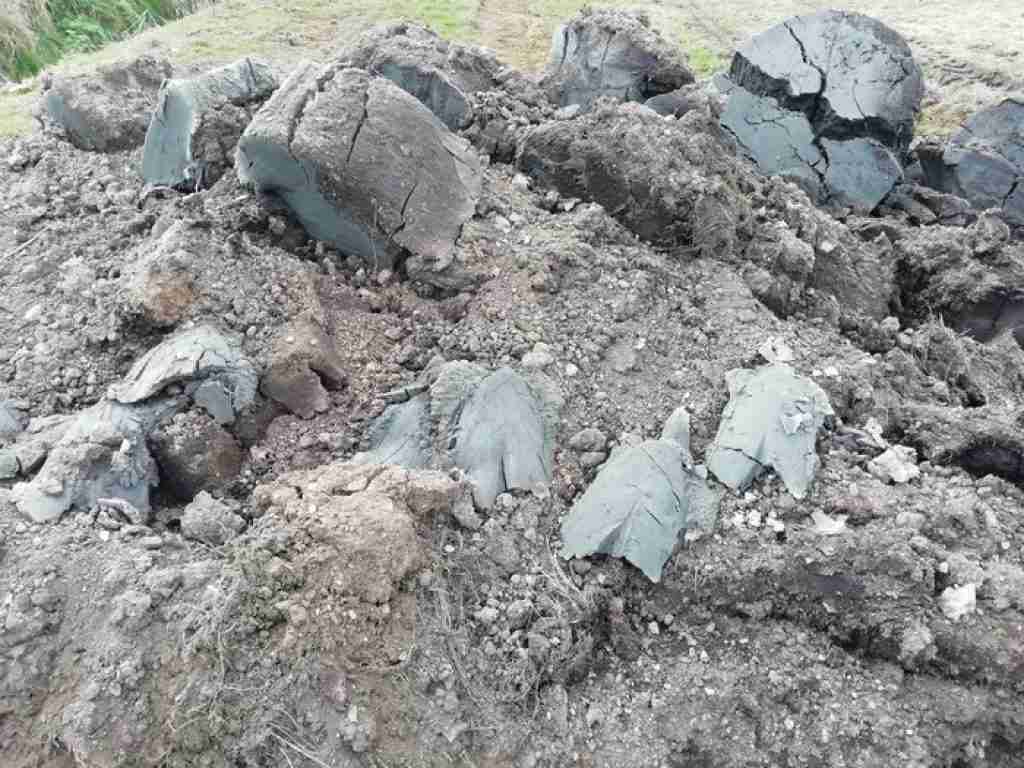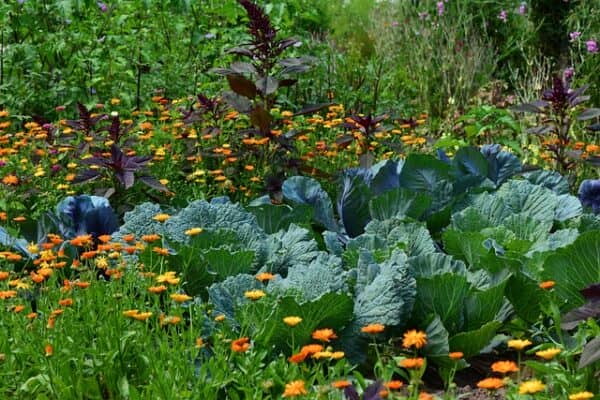To achieve greatness in any sphere, you must start with – and master – the basics. Begin with the fundamentals, and build upon your foundation in order to succeed. It goes without saying that the foundation of any thriving garden is the soil – here’s the dirt on identifying what kind of soil you have in your garden and choosing which is the best soil for your plants.
Some soils are naturally fertile and need little alteration to achieve the best planting results, but others require a lot more help. Knowing your soil type will help determine which fertilizers and amendments should be added to your garden before you even think about planting. Based on their dominant characteristics, we classify soil as one of six types: chalky, clay, loamy, peaty, sandy, or silty.
In many regions – especially where building activity or landscaping has mixed up different soils – it can be difficult to tell what type of soil you have, and it could change dramatically from one area of your garden to another.
How to determine your soil type
While soil specialists can perform several tests to determine the exact characteristics of soil – its particulate matter, acidity, and chemical composition – there are a few ways that the average gardener can identify the soil in their gardens. Many are simple and require few to no materials, therefore they cost relatively little to perform.
The Water Test
Pour water onto the soil. Sandy and gravelly soils drain quickly whereas the water will take quite a bit longer to sink into clay soil.
The Squeeze Test or “Ribbon Test”
Grab a small handful of soil and softly squeeze it in your fist or try to roll it into a thin ribbon between your hands.
Clay soils typically feel sticky or slick to the touch and hold their shape after you release them. Both loamy and silty soils have a smooth texture and are likely to hold their shape for a short time before beginning to crumble. Peaty soil feels spongy when you compress it. Sandy soil feels gritty and will break up after being compacted.
The Acid Test
Some soils have a relatively acidic nature, while a few tend to be more alkaline – especially chalky soils. While most plants favor soil with a pH between 6.5 and 7, soil pH can range anywhere from 4.0 to 8.5; areas with soft water typically have acid soil and those with hard water have alkaline soil.
You can purchase a pH test kit at most garden centers or online, but there is a simple home test for alkalinity in your soil: add vinegar to a soil sample, and if you notice any bubbling or frothing, your soil contains alkaline particles.
The Soil Test Kit
Available online and at any garden center, a soil test will not only provide you with the soil’s pH level but also the amount of plant nutrients (nitrogen, phosphate, and potassium) it contains. These test kits help determine not only your soil pH, but also which additives will improve your planting beds, and should be used throughout the growing period in order to maintain healthy soil and achieve the best result.
Fill a clear jar or other transparent container about 2/3 to 3/4 full of water before adding a handful of soil.
Some gardeners also add in a pinch of salt or a teaspoon of dish detergent to help the soil particles separate. Close the container and shake it vigorously for a moment, then leave it on a flat surface for at least 10-12 hours to allow it to settle.
- Clay and silty soils will leave the water cloudy with a particulate layer at the bottom of the container.
- Peaty soil will have many particles floating at the surface, and the water will be slightly cloudy with a thin layer at the bottom of the container.
- A chalky soil will color the water slightly greyish, and a layer of gritty whitish fragments will be scattered amid the soil at the bottom of the container.
- Sandy soils will leave the water mostly clear as the particles will fall and form a layer on the base of the jar.
- Clear water with gritty particles on the bottom of the container and a series of finer layers on top are a good indication of loamy soil.
Soil Particles
Almost every soil will have a combination of three components: clay, sand, and silt.
- Clay particles are the finest at less than 0.002 millimeters in diameter and tend to remain dissolved within the water.
- Silt particles measure between 0.002 and 0.05 millimeters in diameter.
- Sand is the largest small particulate in soil, with a diameter between 0.05 and 2 millimeters.
The soil may also contain stones, which are any particulate matter larger than 2 millimeters in diameter. Chalky soils will also contain calcium carbonate or lime.
Soil Classification by Texture
The exact breakdown of each type of particulate matter in the soil will determine its classification on the chart to the right.
After performing the Settle test, simply measure the total amount of precipitate at the bottom of the jar, and then the depth of each layer (clay, silt, and sand), dividing each by the total depth to obtain its percentage within the soil.
Then situate that percentage along the proper edge, drawing a line toward the center of the triangle, and find the point where the three lines converge.
For example, a combination of 30% clay, 20% silt, and 50% sand would be considered Sandy clay loam.
Because clay particles are so tiny, clay tends to dominate the soil texture whenever it is present. Anything containing over 25% clay is considered clay soil, or heavy soil.
The 6 Types of Soil
Knowing the different types of soil as well as their advantages and disadvantages can help you choose the right plants for your garden; you can also determine which amendments you will require to achieve the optimum soil texture, pH, and nutrient level.
Chalky Soil
Chalky soils are quite common in Britain and are typically rich in calcium carbonate or limestone, which increases their pH level.
The soil texture can be either light or heavy and may contain different sizes of particulate matter, though stones are common.
Because of their porous nature, chalky soils tend to drain well and while they are sticky and unworkable when wet, they can be cultivated soon afterward.
This soil is great for younger and smaller plants and they will establish themselves more quickly than would a more mature plant.
Very few plants thrive in alkaline soil, so you must choose vegetation that prefers a higher pH level such as prairie plants and those originating in the Mediterranean; otherwise, you may have to invest considerable time and money into lowering the soil pH.
Though applying sulfur is a common way to reduce soil alkalinity, chalky soils would require huge quantities of sulfur to be applied over many years, making it an ineffective solution.
You must incorporate lots of organic matter to improve moisture retention and humus levels in chalky soil; mulching your beds with organic matter will also help conserve moisture.
In some cases, you may need to break up the subsoil in chalky areas to allow tree and shrubs roots to get sufficient depth to thrive. Adding topsoil is a good alternative for lawns, borders, and planting beds.
Clay Soil
Because it’s comprised primarily of very fine particles, clay soil is extremely sticky and has poor drainage properties. In regions like the United States, clay is quite prevalent in the soil; it causes puddling in wet weather, creates thick glue-like mud when wet, and crusts over or cracks in warm, dry weather.
The upside to soil heavy in clay is that it will retain moisture very well and is richer in nutrients than other soil types since clay particles attract nutrients such as calcium, magnesium, and potassium.
Sadly though, clay soil has a tendency to heave over the winter and is slow to warm up in the spring. It also compacts easily, which can make it difficult for plant roots to grow and establish themselves.
You can improve clay soil by adding 6”-8” of the organic material of your choice and mixing it into the top 6”-12” inches of soil; this can be done with a shovel in small planting beds, or with a tiller.
Though newer gardeners assume that adding the opposite type of soil – sand – to clay soil will improve the texture quickly, the resulting mixture looks and acts more like concrete; clay soils are best improved with compost and other organic matter only.
You will need to add organic matter regularly to keep up your planting beds and prevent the soil from returning to a heavy clay state.
Loam Soil

Though the technical definition of loam is soil containing less than 52% sand, 28%-50% silt, and less than 27% clay, most loamy soils are comprised of fairly equal amounts of sand and silt with less clay.
This miracle soil contains just enough clay to retain moisture and nutrients, but the right amount of sand to provide proper aeration and drainage as it prevent the roots from sitting in water; the silt content helps the clay and sand mix together readily. The crumbly and porous nature of loam allows air and water to mix into the soil, which creates optimal conditions for growth.
In order to maintain loamy soil, test the soil texture regularly and add organic matter if the soil is becoming predominantly clay or sand-based.
Peat Soil

Peat soils take many thousands of years to form as they’re comprised of plant matter that has partially decomposed in water with an extremely low oxygen level. Peatlands, found in both temperate and tropical regions, are also called bogs or mires.
Peat soils can vary greatly in acidity and nutrient content, which affects their suitability as a planting medium; peat with a more neutral pH contains a higher level of nutrients. Peat and other organic soil are prone to rapid erosion and can subside betwenn 1”-2” per year.
Peat is best used as a soil amendment to promote aeration, not only due to its varying nature but also because it’s an extremely limited resource and peat farming can irrevocably change the surrounding region.
Sandy Soil
Sandy soil has a gritty texture and crumbles easily; it is comprised primarily of small pieces of eroded rocks. Because sand has such large particles, water runs easily through it and plants have difficulty thriving with little moisture or nutrients. Sandy soil is also prone to erosion, especially on sloping terrain with high rainfall amounts.
If you have extremely sandy soil, consider drought-tolerant plants; however, with a lot of hard work, sandy soil can be improved enough for all types of vegetation to thrive.
Adding compost or well-rotted manure will increase the level of nutrients in the soil, but may add too much salt to the soil in regions where the soil already contains lots of salt, such as on or near saltwater beaches.
You may also wish to add peat or vermiculite to improve moisture retention, though they won’t add much nutrient value to the soil.
Silty Soil
Like sand, silt is comprised of finely eroded rock particles. Because silt settles in still water, and can be deposited onto the shore during flooding, floodplains throughout the world typically contain silty soil.
The River Nile Delta is rich in silt deposits, and farmers have been harvesting crops there for thousands of years. Lotus plants, for example, thrive in silty wetlands and are common in the tropical regions of the eastern hemisphere.
Silty soil can also be a sign of past glacial activity in the area, such as on the Great Plains of North America.
Because of its particulate size, silt allows air to circulate in the soil while still promoting good drainage.
Also like sand, silty soil is prone to erosion, so when there aren’t enough large rocks or root systems in place to prevent soil erosion, silt can accumulate quickly in nearby waterways rendering the rivers and lakes murkier, which can have repercussions on the plants and animals within those ecosystems.
Adding organic matter to silty soil will help maintain the nutrients, allows root systems to flourish and vegetation to thrive
Further reading on soil horizons and profiles for more in-depth information on the beginning of soil creation.



